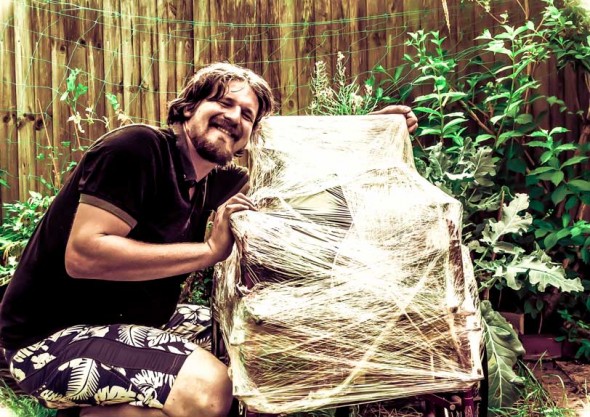The Invisibility of Disabled Sexuality
The Invisibility of Disabled Sexuality is a piece that examines our relationship to disability and how disabled sexuality is something rarely seen or spoken about. When it is, it is usually fetishized (as in the case of devotees) or seen as something that has a freakshow element to it, only shown to serve a morbid curiosity. The Invisibility of Disabled Sexuality is a piece created to provoke reaction and simultaneously normalise disability.
The work was created in response to people’s assumptions that I (being in a wheelchair) could not be the parent of my children, and those who are particularly amazed when I venture outside with them on my own. I have even experienced friends who were shocked that my husband stayed with me after I got ill and told me how “lucky I was”.
The installation takes the guise of a bedroom, hidden in a blacked out tent.
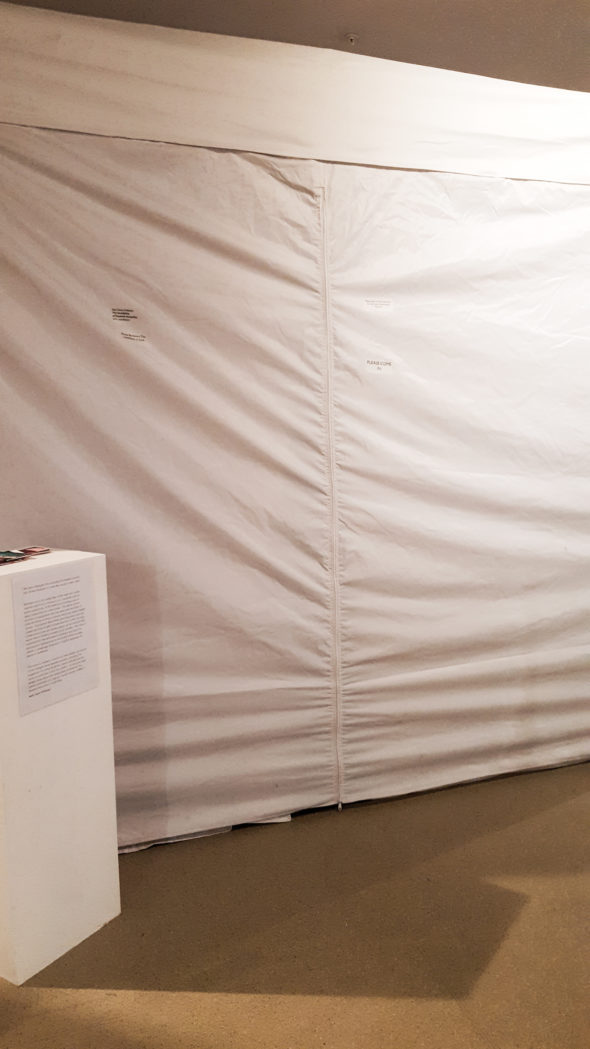
The room is designed to operate using two lights. Normal light via a lamp where the room resembles an untidy bedroom, only with a transparent vagina and penis, representing the male and female bodies.
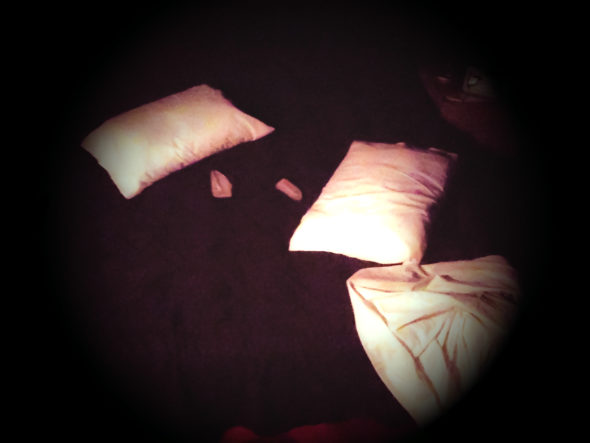
This then turns off and a blacklight comes on revealing the hidden sexuality of disability. Marks made with invisible UV paint, meshing the ideas of body painting and sexuality (the marks a result of a sexual encounter) are illuminated by the UV light.
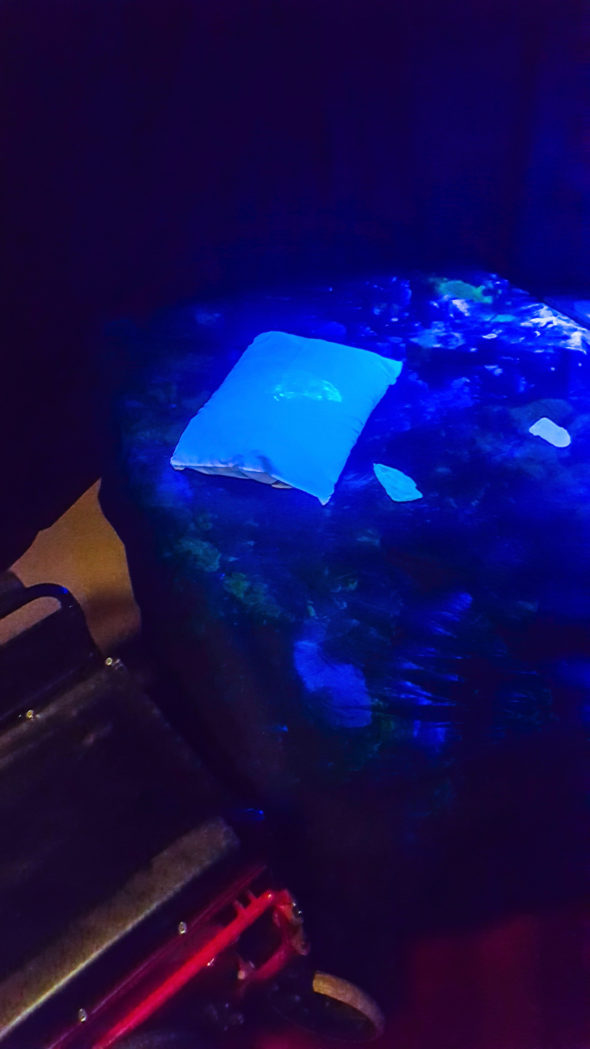
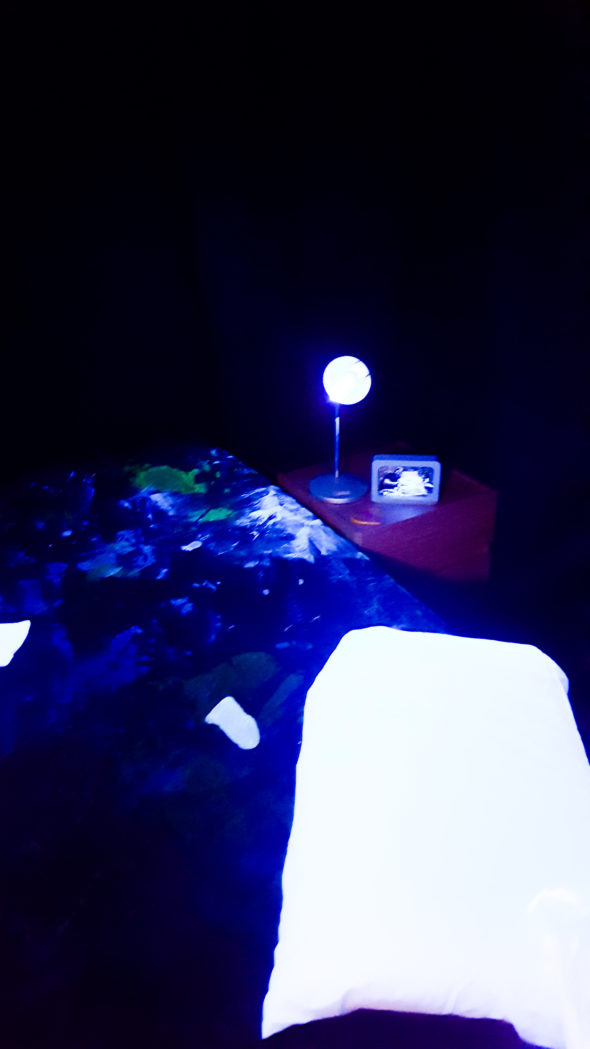
Around the room is the ephemera of disability and life, a wheelchair, sheets, a bedside cabinet and lamp and a photo showing a couple together although the “me” has been replaced by a wheelchair covered and suffocated in clingfilm

